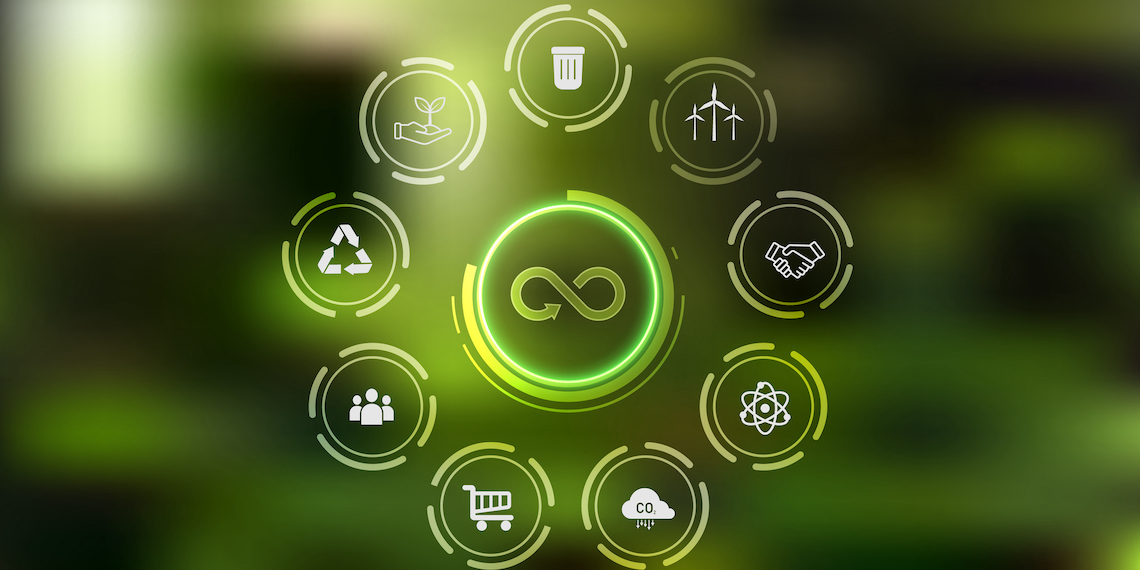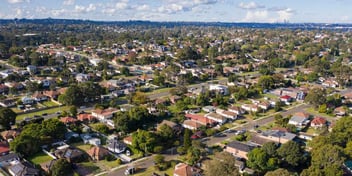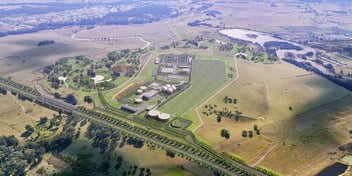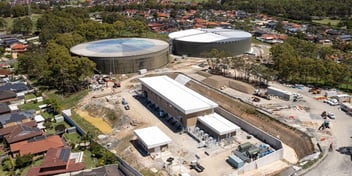Why collaboration is key to unlocking the circular economy

Sydney’s Western Parkland City is set to become a circular economy powerhouse, but how do aspirations transform into initiatives and actions? One utility leading the charge is leaning into collaboration and engagement to unlock circular economy partnerships.
Set to present at Ozwater’23 on Sydney Water’s approach to collaborating and engaging to support the transition, Circular Economy Manager Django Seccombe and Head of Government, Stakeholder and Community Arli Miller both say working with other businesses and sectors is crucial to unlocking the circular economy.
“The circular economy is about linking up some of the complex material flows in our economy, and these flows don’t really follow organisational or industry boundaries,” Seccombe said.
“We recognised pretty early on that the only way to approach some of these issues is to partner and collaborate, because no one organisation can tackle the whole challenge on their own.”
While partnering is important, Miller said it’s also crucial to start by engaging broadly so that all potential stakeholders are aware of the opportunities present within circular economy initiatives.
“Within Sydney Water, we had made some assumptions about our stakeholders’ knowledge. Engagement played a key role in educating those outside of the water sector about the role of water in the circular economy,” she said.
“This is important. While we know the capabilities of our own sector and the opportunities for waste processing and the creation of bioenergy generation, biosolids and sustainable biofuels, people outside our industry don’t instantly think of these avenues for circularity.
“Unless we collaborate and join up the ecosystem, we aren’t going to understand the opportunities that are out there.”
With the cost of energy and the need for renewables increasing, Miller said it’s timely for people to be working together to achieve better outcomes for communities, the environment and businesses.
“If we start thinking about those big concepts, the potential is limitless,” she said.
Building relationships
As the Western Parkland City grows, managing new waste streams generated through development of industry and business offers an opportunity to create and collaborate on a new circular economy approach.
To uncover the opportunities available for partnership, Miller said Sydney Water embarked on an extensive engagement program.
“It can be difficult to recognise how many potential avenues there are to collaborate until you cast a wide net. We partnered with NSW Circular and UTS to run a series of Discovery Workshops,” she said.
“Within those workshops, we had representation from industry, academia, the private sector, the development community, state and local government, as well as other utilities. We got a broad sense of the potential enablers and challenges for those organisations when it comes to circular economy opportunities.”
Miller said the workshops generated a huge amount of feedback to work through, which was collated into an outcomes report and redistributed to the participating organisations.
“The outcomes report informed our next phase of engagement, which included a roundtable discussion with leaders in the Western Parkland City to develop a shared vision for what a circular economy might look like,” she said.
“Together, we developed a consensus and a set of recommendations for unlocking a circular economy in the Western Parkland City, which was released at a NSW parliamentary event sponsored by the then Minister for Western Sydney.”
After the report was launched, Miller said Sydney Water started to get buy-in from local government and industry, and opportunities to collaborate on circular economy initiatives started to roll in.
“Not only is there a consensus that this is the direction we should be heading in, there is now a group of leaders promoting it,” she said.
“We followed this up with economic modelling that demonstrated the value this work can deliver to Western Sydney, which has helped our stakeholders get partnerships and opportunities across the line.”
Seccombe said a lot of the technology and innovation in this space is centered on waste management and the bioenergy market.
“We have a partnership kicking off with a group of local councils to look at a joint organic waste processing model for food, garden organics and biosolids from our wastewater,” he said.
“This partnership has been formalised through a memorandum of understanding. We have a few other opportunities progressing with our large trade customers. We have been collaborating on how they might co-locate with us to simplify their waste management and for better recovery of energy and nutrients.
“In the energy space, we are progressing a partnership with a major airline and some other parties in Western Sydney looking at conversion of biogas into sustainable aviation fuel.”
Seccombe said the engagement process has helped the partnership process greatly, as the joint discussion and exploration of opportunities has worked to build credibility.
“We really need to be building these partnerships from a base of trust. That was the other motivation for taking this approach. These sorts of projects are not transactional; they often need to be [an] open book to unpick how value is distributed between parties,” he said.
Key learnings
One of the key learnings from taking this approach to engagement and collaboration for circular economy initiatives in the Western Parkland City is the benefit of starting first with internal collaboration, Miller said, and leaning into the power of communications.
“Internally, the role of communications is often misunderstood and the value of it sometimes underestimated. Communications teams are often considered as reactive, rather than proactive,” she said.
“We have taken the reverse approach. This work started with a great partnership between Sydney Water’s communication, stakeholder and business development teams. Our teams invested a lot to come together effectively on this program, which has underpinned our external success.
“It's about internal collaboration, and valuing what both the technical and the communications side can bring to realise those external business objectives.”
Miller said another key learning concerns the value of creating external advocates.
“Creating partnerships and investing in relationships early has meant that people come on the journey with us. Our early investment has resulted in us all being aligned,” she said.
“Co-creation is essential to circular economy partnerships. Everyone needs to have ownership over the pathway forward.”
Interested in hearing more about Sydney Water’s approach to engagement and collaboration for the circular economy, and the learnings gained along the way? Register for Ozwater’23 here.



